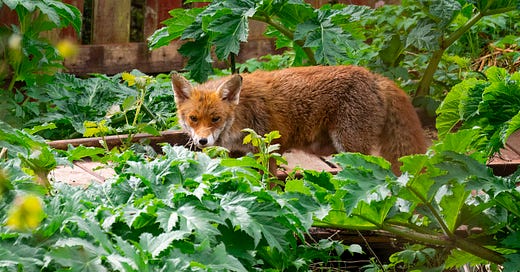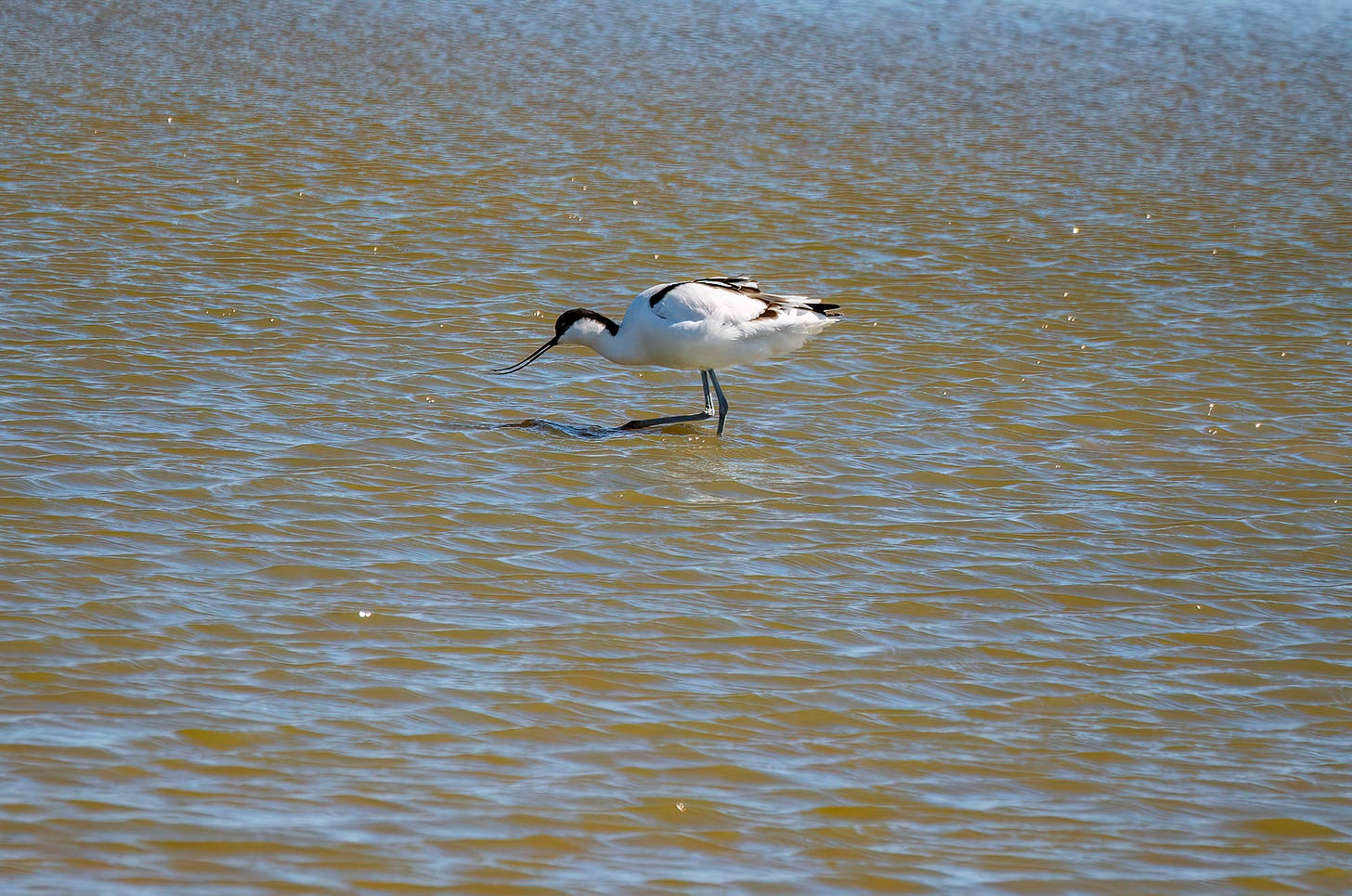April 2025 Viewfinder
There are new faces, noisy neighbours, and old friends in this month's Opposite View Wildlife Photography newsletter.
“It isn’t how much time you spend somewhere, that makes it memorable: it’s how you spend the time”, noted American stand-up comedian, actor and author David Brenner.
And I tried to remind myself of that quote as our train rattled its way back up to Edinburgh earlier this month, after a relaxed but busy break full of joy and laughter. We’d just spent an all too brief, but lovely, four days in the company of family for some big birthday celebrations. The location for our get-together was the village of Brancaster on the north Norfolk coast. Chosen as a convenient hub for most of the family to travel to, and for its picturesque coastal location, my mum also noted that there might be an opportunity for me to take full advantage of it being a wildlife hotspot and suggested I bring my camera. Well, seeing as I'm not one to argue with mother, I did just that.
Spotting boxing brown hares in the wide-open fields on the car journey from the train station to our rented pad felt like a pretty good omen on the wildlife front. And, without wishing to spoil anything, north Norfolk definitely delivered, with some new species to watch and photograph. However, for the full detail you'll need to read my latest blog (link below).
One species that didn't make the blog was a feathered neighbour who was desperately looking for company. As our bedroom in the holiday home was pretty warm, we kept our window open during the night. In the branches of a nearby tree, a male tawny owl gave his territorial hooting call. Unfortunately for him, we didn't hear a female’s ‘keewik’ response but, unfortunately for my partner who was woken up, he persisted with his routine. As annoying as this was for my partner, I have to confess that I loved hearing the owl every night. There was joy in the unfamiliar sound and a reassurance that I take from the noises of wildlife at night.
While being somewhere different with new faces to see (and hear!) is great, I always enjoy revisiting familiar locations, particularly in spring when so much is changing every day. For example, I'm pretty sure that I’ve missed photographing local roe buck Russet shedding the velvet from his antlers again this year. A combination of being away in Norfolk followed by the deer shifting into more secluded spots as the park got busier during the Easter school holidays, has meant that I haven’t seen this buck recently. It’s likely that the next time I see him his antlers will already be clean. So, I’m looking forward to returning to my daily walks with the deer.
I have enjoyed catching up with a few other subjects in the past couple of weeks to see how their breeding seasons are progressing, including the black guillemots on the coast and the ring-necked parakeets in the city. I aim to make the most of the limited time I get with each species.
I’ve also rerouted my lunchtime walks in the past couple of weeks to take me alongside the burn where I used to regularly photograph foxes. Spring isn’t usually a great time for photographing these particular individuals. They become much harder to see, as the greenery grows up and conceals their resting and hunting spots. I really only try to see them there now in wintry conditions, when they are easy to spot.
Look closely at the photo of a sunbathing ‘burn’ fox below and you’ll see why I’ve been making the effort again recently. On reviewing the images after I captured them, I noticed this fox was a vixen with enlarged teats - meaning she must have cubs nearby. This is the first time I’ve had concrete evidence of one of these foxes having cubs, despite having tons of trail camera footage from previous years and many photos.
Obviously, there’s no guarantee that I’ll ever see the cubs, but I’ll keep strolling by the burn. I live in hope, and, honestly, is there any better motto for a wildlife photographer?
Best wishes,
Rhiannon
Opposite View Wildlife Photography
Through my lens
A stroll on the salty side - photographing Norfolk nature at Titchwell Marsh
Norfolk is known as a birdwatchers’ paradise, with some people describing it as the birding capital of Britain. The county gets this reputation due to the variety and sheer numbers of species that you can see in the area - both resident and migrants - and the rare birds that often arrive.
And if Norfolk is a hotspot for birders, it makes sense that photographers flock (pun intended) to its nature reserves and diverse habitats to point their lenses at the wildlife.
In this blog, I explore the RSPB’s Titchwell Marsh Reserve and share how I captured memorable wildlife moments on the north Norfolk coast.
Behind the image
Beauty and the Beast – my shortlisted image in the Scottish Nature Photography Awards 2024
Last month, I received an email confirming I'd had an image shortlisted in the Environmental category of the Scottish Nature Photography Awards. I was astonished to be recognised in this competition again, after my shortlisting in the Scottish Wildlife Behaviour category last year with Ex-damsel in distress. I am also delighted that another of my images will be published in the upcoming yearbook.
In this blog, I share the story behind the image.
And finally…
This Sunday (4th May) marks International Dawn Chorus Day, when we celebrate the peak of birds singing to find a mate and defend their territory.
So, will you be waking up somewhere different to new voices or in your bed listening to the familiar songs from your local patch? Will you be heading out to listen with just your camera for company or are you going to take part in an organised walk or activity? The RSPB and Wildlife Trusts have some great suggestions if you’re based in the UK. Let me know what you’ve got planned in the comments; I’d love to hear from you.
Obviously, I recommend getting up early to experience the dawn chorus – and for photographing wildlife in warm dawn light – but, if that isn’t a possibility for you, it’s worth remembering that many species also sing as dusk falls. And there’s still plenty of birdsong in the middle of the day, which is when I captured this willow warbler belting out its tune.
There are more videos of wildlife encounters available to view on my YouTube channel including otters, dolphins, waxwings, deer, seabirds, and all of my wildlife photography top tips videos.
Please subscribe to my channel to keep up to date.
Keep in touch
Thanks for reading this! If you have any comments or questions, opportunities for photography or if you would like to use any of my images, please leave a comment. I’d love to hear from you.
You can also follow me on:






